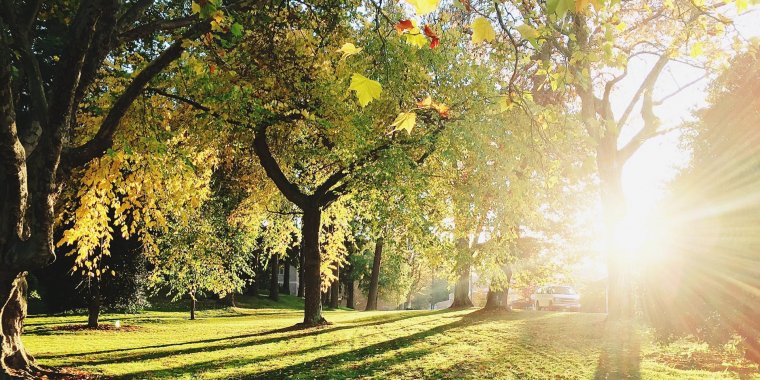| News / Science News |
Study Suggests Trees' Potential to Slow Global Warming in Next 100 Years
An international team led by scientists at Stanford University and the Autonomous University of Barcelona finds reason to hope trees will continue to suck up carbon dioxide at generous rates through at least the end of the century. However, the study published Aug. 12 in Nature Climate Change warns that trees can only absorb a fraction of carbon dioxide in the atmosphere and their ability to do so beyond 2100 is unclear.

Study suggests trees' potential to slow global warming in next 100 years. Photo: Madison Nickel/Unsplash
"Keeping fossil fuels in the ground is the best way to limit further warming," said study lead author César Terrer, a postdoctoral scholar in Earth system science in Stanford's School of Earth, Energy & Environmental Sciences. "But stopping deforestation and preserving forests so they can grow more is our next-best solution."
Carbon dioxide—the dominant greenhouse gas warming the earth—is food for trees and plants. Combined with nutrients like nitrogen and phosphorus, it helps trees grow and thrive.
But as carbon dioxide concentrations rise, trees will need extra nitrogen and phosphorus to balance their diet. The question of how much extra carbon dioxide trees can take up, given limitations of these other nutrients, is a critical uncertainty in predicting global warming.
Several individual experiments, such as fumigating forests with elevated levels of carbon dioxide and growing plants in gas-filled chambers, have provided critical data but no definitive answer globally.
To more accurately predict the capacity of trees and plants to sequester carbon dioxide in the future, the researchers synthesized data from all elevated carbon dioxide experiments conducted so far—in grassland, shrubland, cropland and forest systems—including ones the researchers directed.
Using statistical methods, machine-learning, models and satellite data, they quantified how much soil nutrients and climate factors limit the ability of plants and trees to absorb extra carbon dioxide. Based on global datasets of soil nutrients, they also mapped the potential of carbon dioxide to increase the amount and size of plants in the future, when atmospheric concentrations of the gas could double.
Their results show that carbon dioxide levels expected by the end of the century should increase plant biomass by 12 percent, enabling plants and trees to store more carbon dioxide—an amount equivalent to six years of current fossil fuel emissions.
The study highlights important partnerships trees forge with soil microbes and fungi to help them take up the extra nitrogen and phosphorus they need to balance their additional carbon dioxide intake. It also emphasizes the critical role of tropical forests, such as those in the Amazon, Congo and Indonesia, as regions with the greatest potential to store additional carbon.
YOU MAY ALSO LIKE





